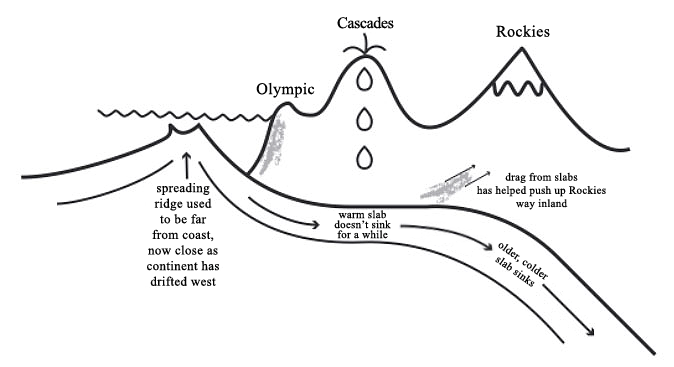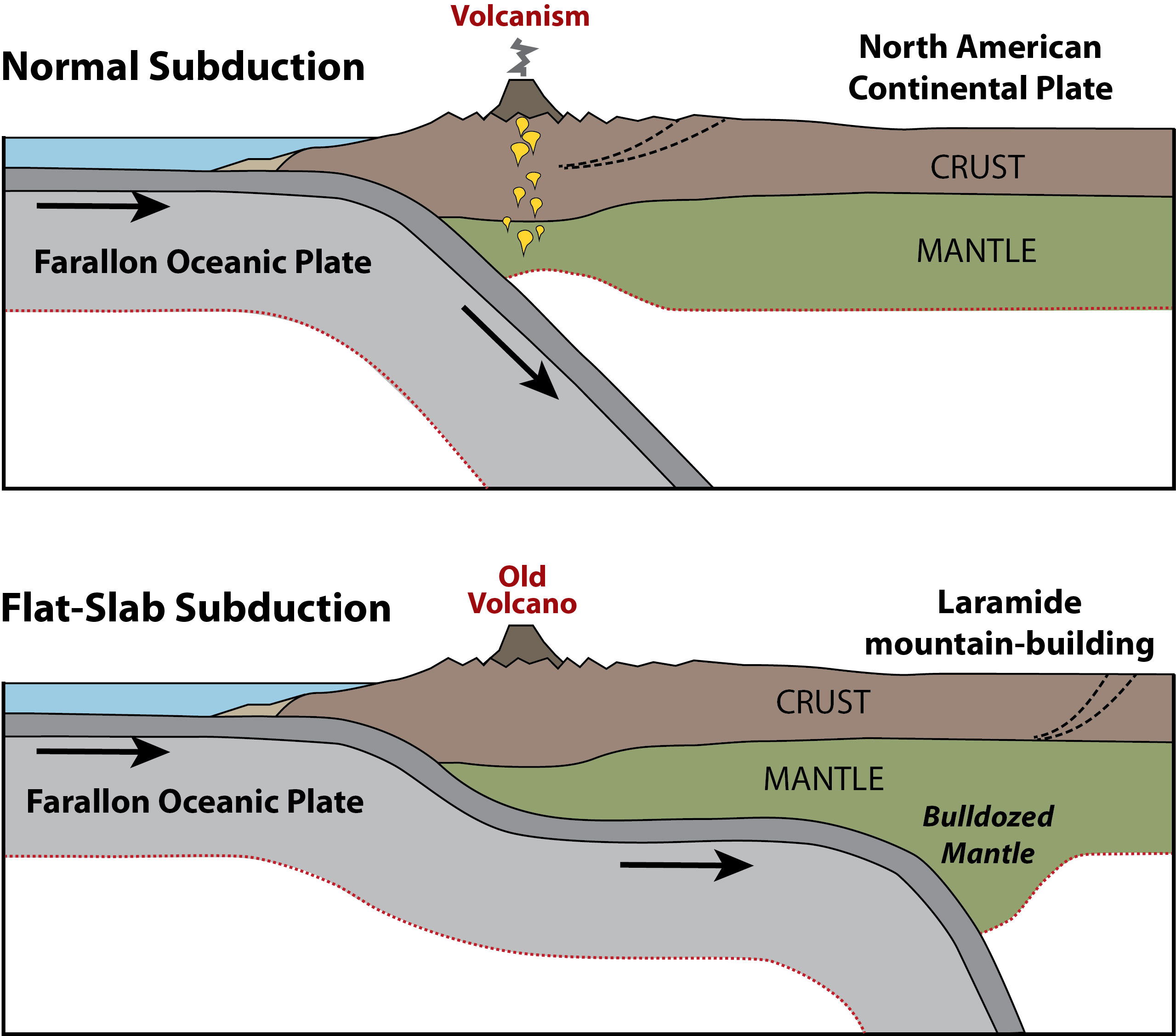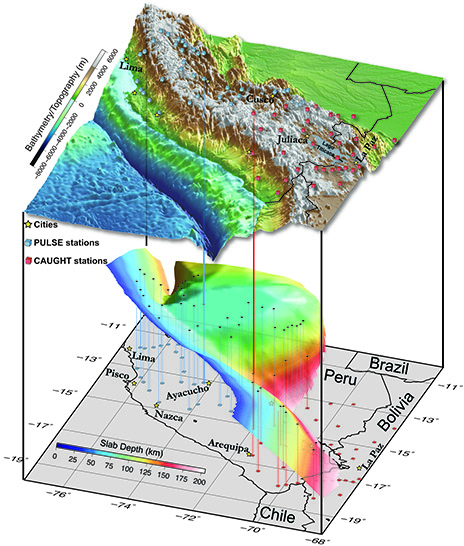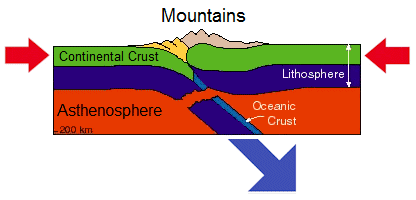What plates formed the rocky mountains ideas
Home » Background » What plates formed the rocky mountains ideasYour What plates formed the rocky mountains images are available. What plates formed the rocky mountains are a topic that is being searched for and liked by netizens today. You can Find and Download the What plates formed the rocky mountains files here. Get all royalty-free images.
If you’re looking for what plates formed the rocky mountains pictures information related to the what plates formed the rocky mountains keyword, you have come to the ideal blog. Our site always provides you with suggestions for seeking the maximum quality video and picture content, please kindly surf and locate more informative video content and images that match your interests.
What Plates Formed The Rocky Mountains. The Rocky Mountains Plate Tectonics Andes - Wikipedia The Free Encyclopedia Panorama of the Andes mountains and their arable lands in The Andes are the result of plate tectonics the compression of the western rim of the South American Plate due to the subduction of the Nazca Plate and the Antarctic Plate. Similarly it is asked what type of plate boundary is the Rocky Mountains. There were several series of mountain building and volcanism on the Western edge forming the Rockies the Intermountain West the Sierra Nevada and the California coastal range. When they collided rock on each side was forced upwards or downwards.
 Erosion Rocky Mountain Formation Students Britannica Kids Homework Help Mountain Formation Rocky Mountains Kids Homework Help From pinterest.com
Erosion Rocky Mountain Formation Students Britannica Kids Homework Help Mountain Formation Rocky Mountains Kids Homework Help From pinterest.com
What plates are involved in the formation of the Rocky Mountains. The Laramide orogeny period also known as the mountain-building period saw the Farallon ocean plate move underneath the North American tectonic plate at a low businesshandsomeus. How long did it take for Rocky Mountains to form. Apr 30 The Rocky Mountains formed during the Laramide orogeny period between 80 million to 55 million years ago. What plate boundary formed the Rocky Mountains. They were created by the North American plate crashing into the Pacific plate when they were on the western North American plate boundary.
Apr 30 The Rocky Mountains formed during the Laramide orogeny period between 80 million to 55 million years ago.
The Ancestral Rocky Mountains were intracratonic block uplifts that formed in Colorado and the surrounding region during Pennsylvanian time. The Rocky Mountains Plate Tectonics Andes - Wikipedia The Free Encyclopedia Panorama of the Andes mountains and their arable lands in The Andes are the result of plate tectonics the compression of the western rim of the South American Plate due to the subduction of the Nazca Plate and the Antarctic Plate. The Ancestral Rocky Mountains were intracratonic block uplifts that formed in Colorado and the surrounding region during Pennsylvanian time. The mountains that make up the park along the rest of the Rocky Mountains were uplifted during the Laramide Orogeny starting around 70-80 million years ago and ending roughly 35 million years ago. What plates are involved in the formation of the Rocky Mountains. Normally mountains form close to coastlines in places where oceanic plates diveor subductunder continental plates get an overview of plate tectonics.

What plates are involved in the formation of the Rocky Mountains. The mountains that make up the park along the rest of the Rocky Mountains were uplifted during the Laramide Orogeny starting around 70-80 million years ago and ending roughly 35 million years ago. They were created by the North American plate crashing into the Pacific plate when they were on the western North American plate boundary. The Laramide orogeny period also known as the mountain-building period saw the Farallon ocean plate move underneath the North American tectonic plate at a low businesshandsomeus. The Rocky Mountains were formed by the collision of tectonic plates the North American plate and the Pacific plate.
 Source: slideplayer.com
Source: slideplayer.com
The Rocky Mountains are the biggest geological feature in North America and they dont behave like any other mountains. When they collided rock on each side was forced upwards or downwards. The Rocky Mountains are located in the western part of the United States and stretch for 3000 miles from Canada to Mexico. The rocks in the Rocky Mountains were formed before the mountains were raised by tectonic forces. The Laramide orogeny period also known as the mountain-building period saw the Farallon ocean plate move underneath the North American tectonic plate at a low businesshandsomeus.

The Rocky Mountains were formed as a result of plate tectonic activity but not in the usual manner of subduction of an ocean plate sinking under a. The Rocky Mountains formed 80 million to 55 million years ago during the Laramide orogeny in which a number of. The Rocky Mountains were formed as a result of plate tectonic activity but not in the usual manner of subduction of an ocean plate sinking under a. The Laramide orogeny period also known as the mountain-building period saw the Farallon ocean plate move underneath the North American tectonic plate at a low businesshandsomeus. They consisted largely of Precambrian metamorphic rock forced upward through layers of the limestone laid down in the shallow sea.
 Source: e-education.psu.edu
Source: e-education.psu.edu
What plate boundary formed the Rocky Mountains. This is a pretty good geologic detective story and it goes all over the western United States. The Rocky Mountains were cause mostly by continental uplift caused in turn by the collision of two massive continental plates. The Rocky Mountains are the biggest geological feature in North America and they dont behave like any other mountains. Similarly it is asked what type of plate boundary is the Rocky Mountains.
 Source: people.highline.edu
Source: people.highline.edu
There were several series of mountain building and volcanism on the Western edge forming the Rockies the Intermountain West the Sierra Nevada and the California coastal range. Apr 30 The Rocky Mountains formed during the Laramide orogeny period between 80 million to 55 million years ago. Their development related to the collision of North America with South AmericaAfrica which produced the Ouachita-Marathon orogeny. This is a pretty good geologic detective story and it goes all over the western United States. They consisted largely of Precambrian metamorphic rock forced upward through layers of the limestone laid down in the shallow sea.
 Source: aspentimes.com
Source: aspentimes.com
The Rocky Mountains were formed by the collision of tectonic plates the North American plate and the Pacific plate. Their development related to the collision of North America with South AmericaAfrica which produced the Ouachita-Marathon orogeny. The mountains that make up the park along the rest of the Rocky Mountains were uplifted during the Laramide Orogeny starting around 70-80 million years ago and ending roughly 35 million years ago. Apr 30 The Rocky Mountains formed during the Laramide orogeny period between 80 million to 55 million years ago. Normally mountains form close to coastlines in places where oceanic plates diveor subductunder continental plates get an overview of plate tectonics.
 Source: ualberta.ca
Source: ualberta.ca
What makes the Rock. Were Rocky Mountains underwater. What makes the Rock. The Rocky Mountains Plate Tectonics Andes - Wikipedia The Free Encyclopedia Panorama of the Andes mountains and their arable lands in The Andes are the result of plate tectonics the compression of the western rim of the South American Plate due to the subduction of the Nazca Plate and the Antarctic Plate. The rocks in the Rocky Mountains were formed before the mountains were raised by tectonic forces.
 Source: cires1.colorado.edu
Source: cires1.colorado.edu
Located within the North American Cordillera the Rockies are distinct from the Cascade Range and the Sierra Nevada which all lie farther to the west. Were Rocky Mountains underwater. How long did it take for Rocky Mountains to form. Jordan SiemensThe Image BankGetty Images The Rocky Mountains were formed by plate tectonic activity during three separate events which occurred more than 100 million years ago. They consisted largely of Precambrian metamorphic rock forced upward through layers of the limestone laid down in the shallow sea.
 Source: slideplayer.com
Source: slideplayer.com
The Rocky Mountains formed 80 million to 55 million years ago during the Laramide orogeny in which a number of. Apr 30 The Rocky Mountains formed during the Laramide orogeny period between 80 million to 55 million years ago. This is a pretty good geologic detective story and it goes all over the western United States. The Rocky Mountains Plate Tectonics Andes - Wikipedia The Free Encyclopedia Panorama of the Andes mountains and their arable lands in The Andes are the result of plate tectonics the compression of the western rim of the South American Plate due to the subduction of the Nazca Plate and the Antarctic Plate. The mountains that make up the park along the rest of the Rocky Mountains were uplifted during the Laramide Orogeny starting around 70-80 million years ago and ending roughly 35 million years ago.
 Source: sites.google.com
Source: sites.google.com
How long did it take for Rocky Mountains to form. The Rocky Mountains are the biggest geological feature in North America and they dont behave like any other mountains. The Ancestral Rocky Mountains were intracratonic block uplifts that formed in Colorado and the surrounding region during Pennsylvanian time. The Rocky Mountains were cause mostly by continental uplift caused in turn by the collision of two massive continental plates. Thereof how did the Rocky Mountains formed geologically.
 Source: slideplayer.com
Source: slideplayer.com
The Rocky Mountains are located in the western part of the United States and stretch for 3000 miles from Canada to Mexico. They were created by the North American plate crashing into the Pacific plate when they were on the western North American plate boundary. Normally mountains form close to coastlines in places where oceanic plates diveor subductunder continental plates get an overview of plate tectonics. Apr 30 The Rocky Mountains formed during the Laramide orogeny period between 80 million to 55 million years ago. The Laramide orogeny period also known as the mountain-building period saw the Farallon ocean plate move underneath the North American tectonic plate at a low businesshandsomeus.
 Source: blogs.agu.org
Source: blogs.agu.org
When they collided rock on each side was forced upwards or downwards. Apr 30 The Rocky Mountains formed during the Laramide orogeny period between 80 million to 55 million years ago. Normally mountains form close to coastlines in places where oceanic plates diveor subductunder continental plates get an overview of plate tectonics. Jordan SiemensThe Image BankGetty Images The Rocky Mountains were formed by plate tectonic activity during three separate events which occurred more than 100 million years ago. The Rocky Mountains Plate Tectonics Andes - Wikipedia The Free Encyclopedia Panorama of the Andes mountains and their arable lands in The Andes are the result of plate tectonics the compression of the western rim of the South American Plate due to the subduction of the Nazca Plate and the Antarctic Plate.
 Source: pinterest.com
Source: pinterest.com
The Rocky Mountains were formed by the collision of tectonic plates the North American plate and the Pacific plate. They consisted largely of Precambrian metamorphic rock forced upward through layers of the limestone laid down in the shallow sea. The Rocky Mountains formed 80 million to 55 million years ago during the Laramide orogeny in which a number of. The Rocky Mountains are the biggest geological feature in North America and they dont behave like any other mountains. They were created by the North American plate crashing into the Pacific plate when they were on the western North American plate boundary.
 Source: youtube.com
Source: youtube.com
The Rocky Mountains formed 80 million to 55 million years ago during the Laramide orogeny in which a number of. The Rocky Mountains formed 80 million to 55 million years ago during the Laramide orogeny in which a number of. How long did it take for Rocky Mountains to form. The Rocky Mountains Plate Tectonics Andes - Wikipedia The Free Encyclopedia Panorama of the Andes mountains and their arable lands in The Andes are the result of plate tectonics the compression of the western rim of the South American Plate due to the subduction of the Nazca Plate and the Antarctic Plate. The Rocky Mountains were formed as a result of plate tectonic activity but not in the usual manner of subduction of an ocean plate sinking under a.
 Source: sites.google.com
Source: sites.google.com
Similarly it is asked what type of plate boundary is the Rocky Mountains. What plate boundary formed the Rocky Mountains. The Rocky Mountains were formed by the collision of tectonic plates the North American plate and the Pacific plate. The Ancestral Rocky Mountains were intracratonic block uplifts that formed in Colorado and the surrounding region during Pennsylvanian time. Were Rocky Mountains underwater.
 Source: scitechdaily.com
Source: scitechdaily.com
The Rocky Mountains Plate Tectonics Andes - Wikipedia The Free Encyclopedia Panorama of the Andes mountains and their arable lands in The Andes are the result of plate tectonics the compression of the western rim of the South American Plate due to the subduction of the Nazca Plate and the Antarctic Plate. What makes the Rock. Normally mountains form close to coastlines in places where oceanic plates diveor subductunder continental plates get an overview of plate tectonics. How long did it take for Rocky Mountains to form. The Laramide orogeny period also known as the mountain-building period saw the Farallon ocean plate move underneath the North American tectonic plate at a low businesshandsomeus.
 Source: secondsun.net
Source: secondsun.net
Thereof how did the Rocky Mountains formed geologically. They consisted largely of Precambrian metamorphic rock forced upward through layers of the limestone laid down in the shallow sea. Jordan SiemensThe Image BankGetty Images The Rocky Mountains were formed by plate tectonic activity during three separate events which occurred more than 100 million years ago. The Rocky Mountains formed 80 million to 55 million years ago during the Laramide orogeny in which a number of. Similarly it is asked what type of plate boundary is the Rocky Mountains.
 Source: pinterest.com
Source: pinterest.com
This is a pretty good geologic detective story and it goes all over the western United States. The mountains that make up the park along the rest of the Rocky Mountains were uplifted during the Laramide Orogeny starting around 70-80 million years ago and ending roughly 35 million years ago. The rocks in the Rocky Mountains were formed before the mountains were raised by tectonic forces. The Rocky Mountains were cause mostly by continental uplift caused in turn by the collision of two massive continental plates. The Rocky Mountains Plate Tectonics Andes - Wikipedia The Free Encyclopedia Panorama of the Andes mountains and their arable lands in The Andes are the result of plate tectonics the compression of the western rim of the South American Plate due to the subduction of the Nazca Plate and the Antarctic Plate.
This site is an open community for users to do submittion their favorite wallpapers on the internet, all images or pictures in this website are for personal wallpaper use only, it is stricly prohibited to use this wallpaper for commercial purposes, if you are the author and find this image is shared without your permission, please kindly raise a DMCA report to Us.
If you find this site adventageous, please support us by sharing this posts to your favorite social media accounts like Facebook, Instagram and so on or you can also bookmark this blog page with the title what plates formed the rocky mountains by using Ctrl + D for devices a laptop with a Windows operating system or Command + D for laptops with an Apple operating system. If you use a smartphone, you can also use the drawer menu of the browser you are using. Whether it’s a Windows, Mac, iOS or Android operating system, you will still be able to bookmark this website.